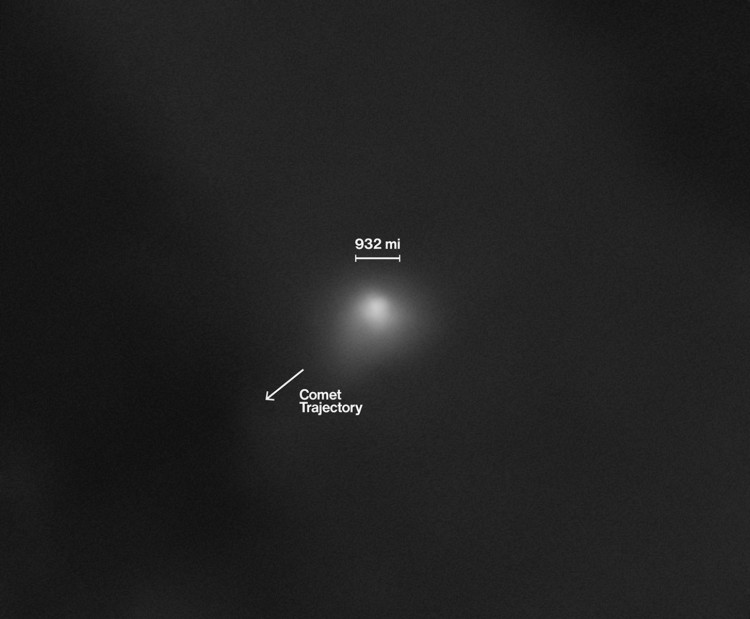NASA unveiled a new set of images this week capturing interstellar comet 3I/ATLAS as it moves deeper into the inner solar system, providing the clearest view yet of only the third confirmed visitor from another star system. The release follows delays caused by the government shutdown, which temporarily halted processing and publication across multiple federal science agencies.
The photos show 3I/ATLAS as a bright point of light with a diffuse halo of gas and dust, and in some exposures a faint, elongated tail. NASA noted that 3I/ATLAS remains "consistent with what we expect from a comet," as scientists continue tracking its trajectory ahead of its closest approach to Earth in mid-December, when it will pass at roughly 167 million miles.
The interstellar comet, first detected in July, follows 'Oumuamua in 2017 and 2I/Borisov in 2019 as the only confirmed objects to enter the solar system from beyond it. Its arrival has prompted intense scientific interest, in part because such objects offer rare insight into the composition of material originating in other systems. NASA spacecraft have been observing 3I/ATLAS for weeks, including during its close pass by the Sun at the end of October.
The European Space Agency also released images of the comet from its ExoMars Trace Gas Orbiter, which observed the object when it was about 18.6 million miles away as it passed near Mars. ESA described the view as a bright white dot in deep space-similar to the appearance captured in NASA's newest photos.

A faint image of comet 3I/ATLAS as observed by ESA/NASA’s SOHO mission between Oct. 15-16, 2025. The comet appears as a slight brightening in the center of the image.
Additional data came from several NASA spacecraft positioned near Mars, which recorded the comet as it zipped past the red planet at a distance of about 18 million miles. At the same time, ground-based efforts ramped up; the Virtual Telescope Project's Gianluca Masi "zoomed in Wednesday from Italy" to track the comet while it approached from approximately 190 million miles away.
The Solar System flyby marks a one-time visit. NASA and ESA both expect 3I/ATLAS to continue outward after its December pass, eventually returning to interstellar space. Early estimates suggest the comet could measure anywhere from 1,444 feet across to as much as 3.5 miles, though its precise dimensions remain under study.
Scientists are also waiting for additional observations from ESA's Juice spacecraft, which has been monitoring 3I/ATLAS while en route to Jupiter. The agency stated that data will not be transmitted until February because Juice's main antenna is currently serving as a heat shield while the probe travels near the Sun.
Astronomers say the comet will become visible again from Earth by early December as it emerges from behind the Sun. It can be viewed from the predawn sky using binoculars or a telescope, and NASA stresses that 3I/ATLAS poses no threat to the planet during its flyby distance of 170 million miles.





